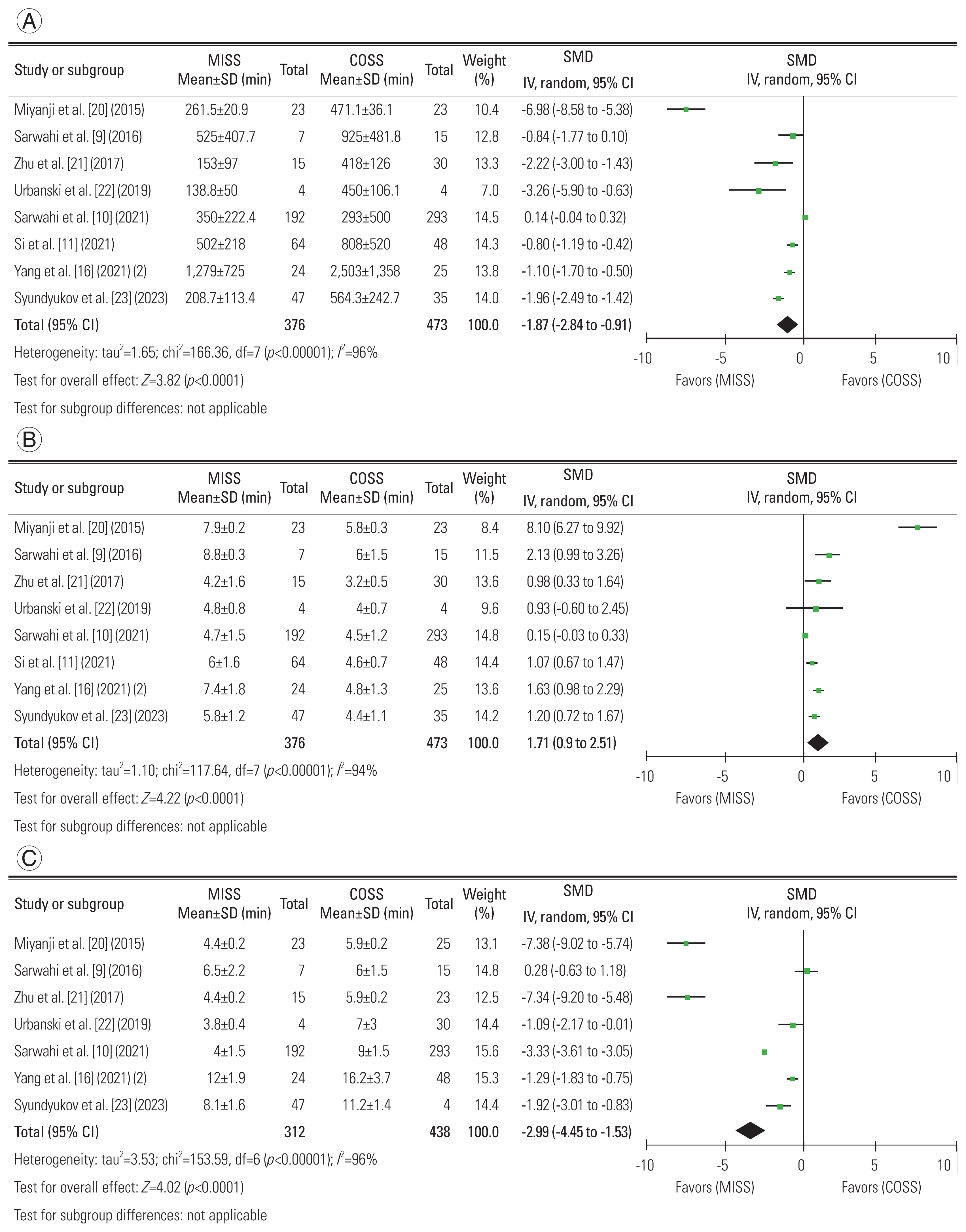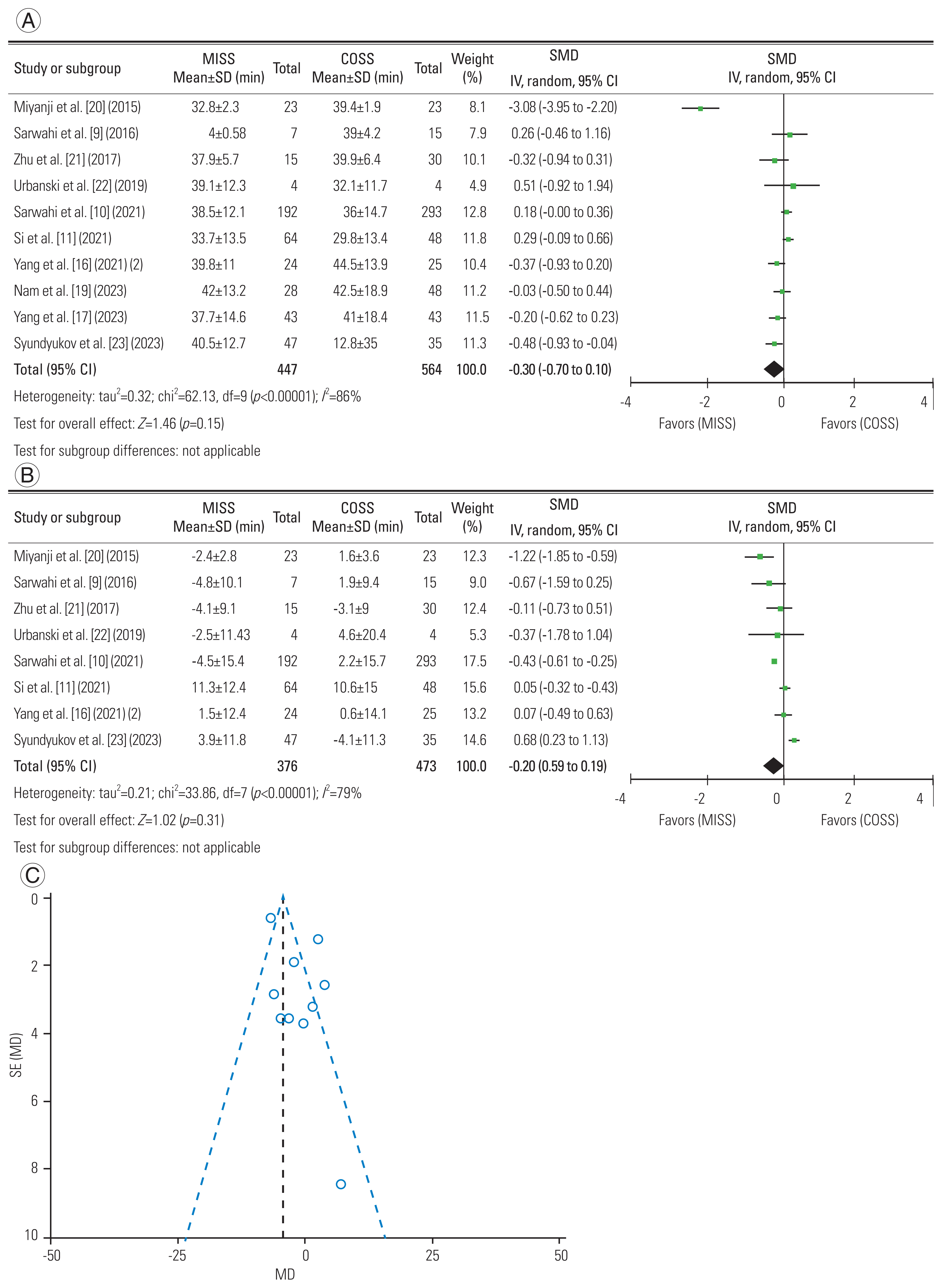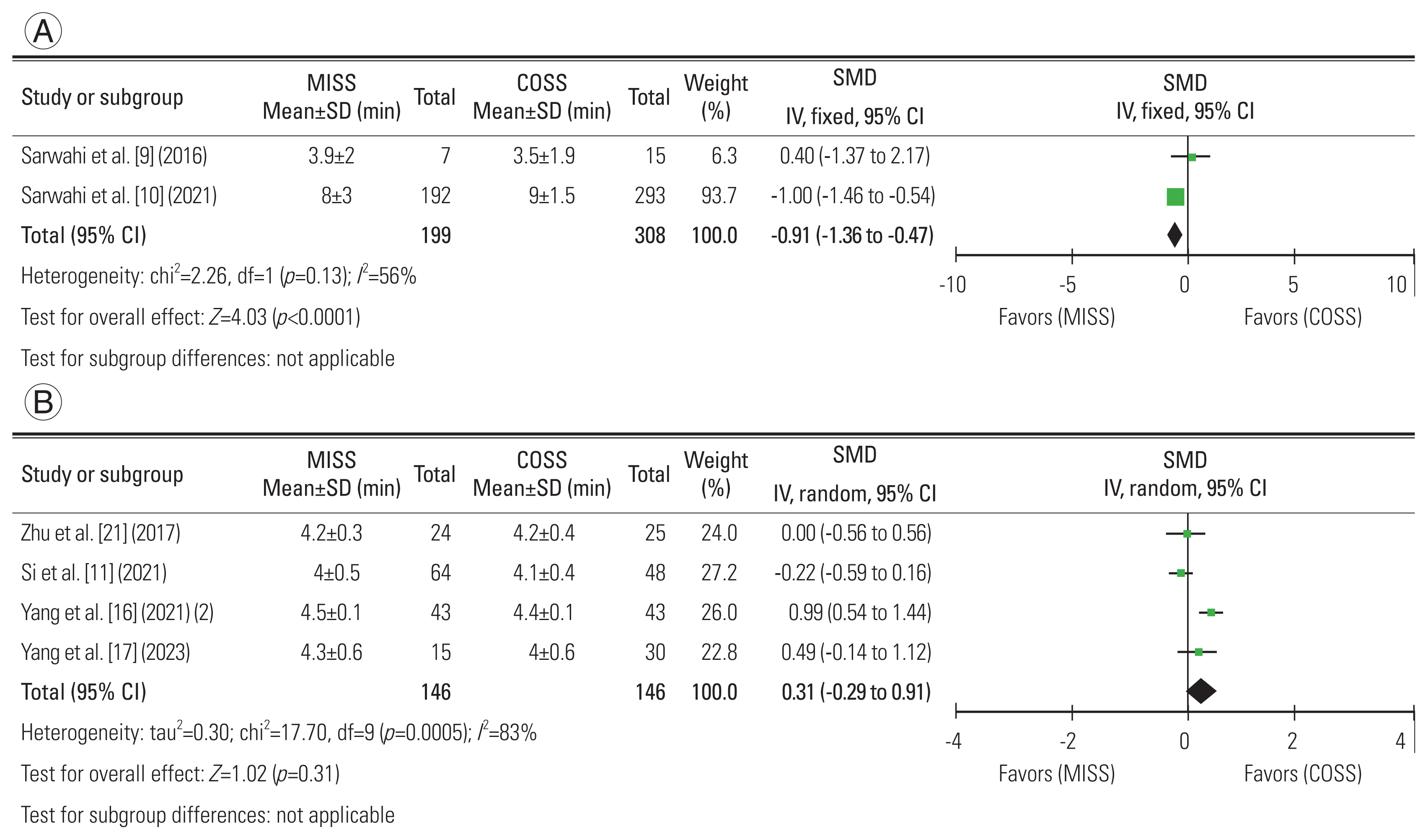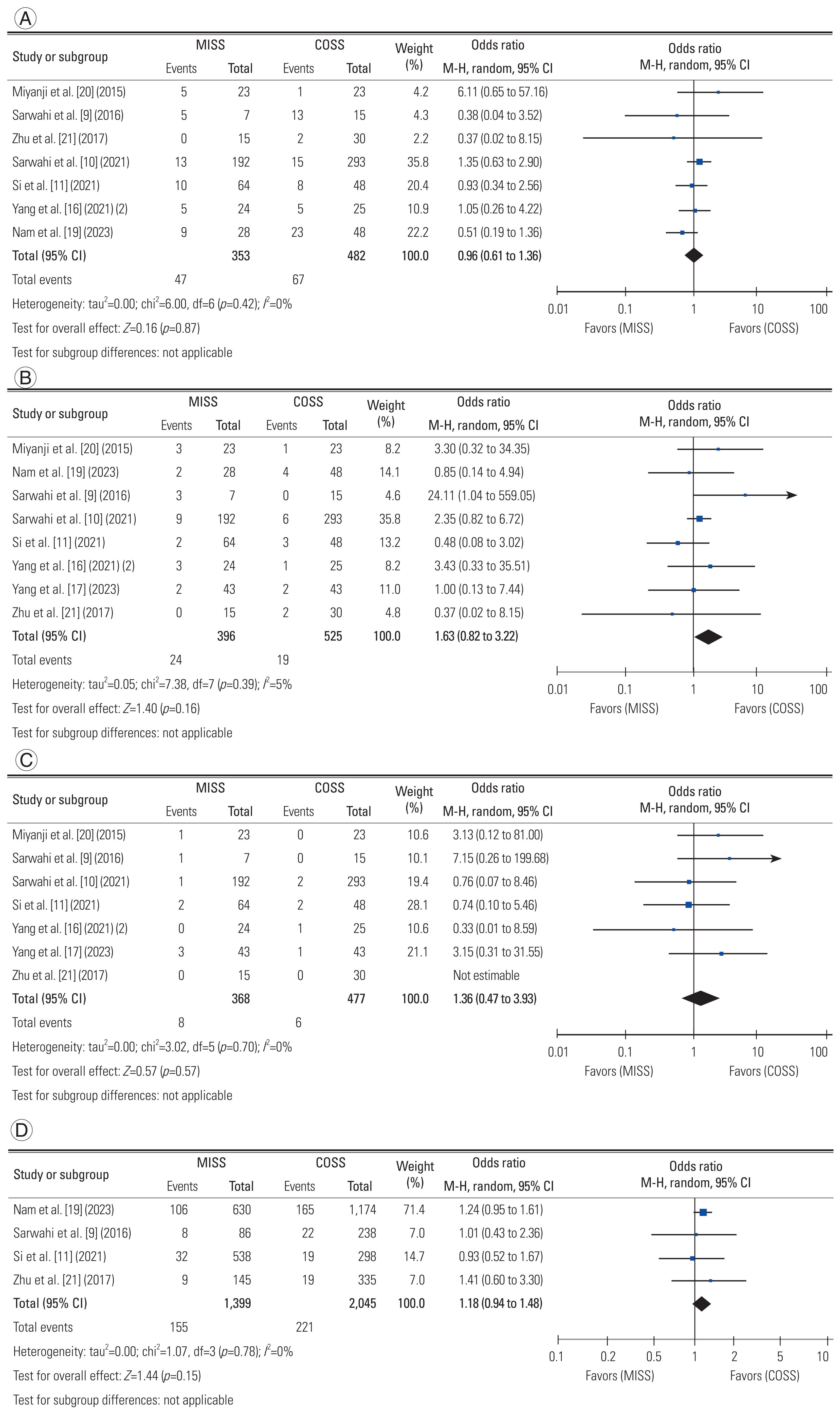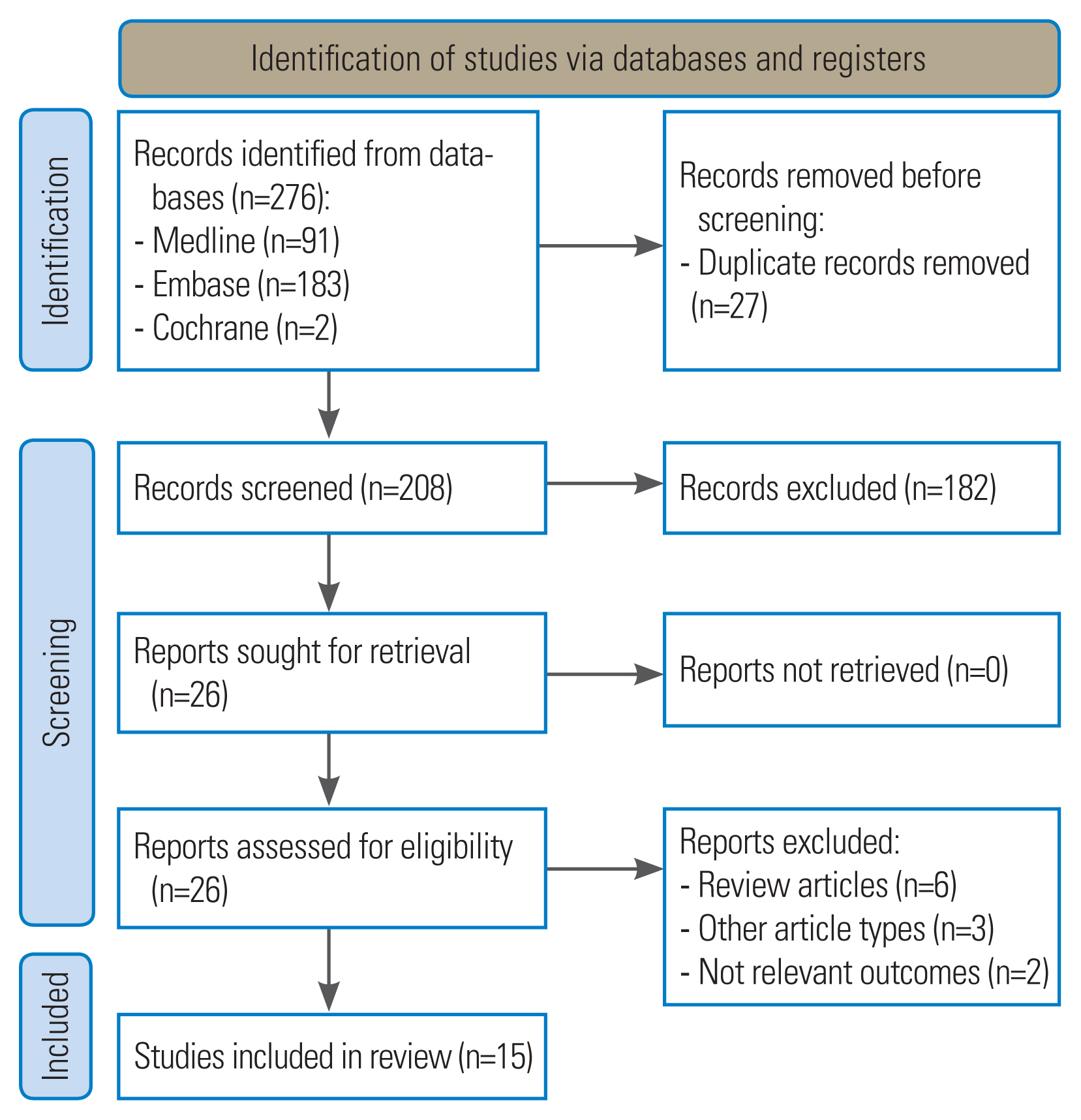9. Sarwahi V, Horn JJ, Kulkarni PM, et al. Minimally invasive surgery in patients with adolescent idiopathic scoliosis: is it better than the standard approach?: a 2-year follow-up study. Clin Spine Surg 2016 29:331–40.

10. Sarwahi V, Galina JM, Hasan S, et al. Minimally invasive versus standard surgery in idiopathic scoliosis patients: a comparative study. Spine (Phila Pa 1976) 2021 46:1326–35.

12. de Bodman C, Miyanji F, Borner B, Zambelli PY, Racloz G, Dayer R. Minimally invasive surgery for adolescent idiopathic scoliosis: correction of deformity and peri-operative morbidity in 70 consecutive patients. Bone Joint J 2017 99-B:1651–7.

14. Yang JH, Chang DG, Suh SW, et al. Safety and effectiveness of minimally invasive scoliosis surgery for adolescent idiopathic scoliosis: a retrospective case series of 84 patients. Eur Spine J 2020 29:761–9.

15. Yang JH, Kim HJ, Chang DG, Suh SW. Minimally invasive scoliosis surgery for adolescent idiopathic scoliosis using posterior mini-open technique. J Clin Neurosci 2021 89:199–205.


16. Yang JH, Kim HJ, Chang DG, Suh SW. Comparative analysis of radiologic and clinical outcomes between conventional open and minimally invasive scoliosis surgery for adolescent idiopathic scoliosis. World Neurosurg 2021 151:e234–40.


18. Yang JH, Kim HJ, Chang DG, Nam Y, Suh SW. Learning curve for minimally invasive scoliosis surgery in adolescent idiopathic scoliosis. World Neurosurg 2023 175:e201–7.

20. Miyanji F, Desai S. Minimally invasive surgical options for adolescent idiopathic scoliosis. Semin Spine Surg 2015 27:39–44.

21. Zhu W, Sun W, Xu L, et al. Minimally invasive scoliosis surgery assisted by O-arm navigation for Lenke type 5C adolescent idiopathic scoliosis: a comparison with standard open approach spinal instrumentation. J Neurosurg Pediatr 2017 19:472–8.


22. Urbanski W, Zaluski R, Kokaveshi A, Aldobasic S, Miekisiak G, Morasiewicz P. Minimal invasive posterior correction of Lenke 5C idiopathic scoliosis: comparative analysis of minimal invasive vs. open surgery. Arch Orthop Trauma Surg 2019 139:1203–8.


25. Stroup DF, Berlin JA, Morton SC, et al. Meta-analysis of observational studies in epidemiology: a proposal for reporting: meta-analysis of observational studies in epidemiology (MOOSE) group. JAMA 2000 283:2008–12.


26. Wells G, Shea B, O’Connell D, et al. The Newcastle-Ottawa Scale (NOS) for assessing the quality of non-randomized studies in meta-analysis [Internet] Ottawa (ON): Ottawa Hospital Research Institute. 2000 [cited 2023 May 26]. Available from:
https://www.ohri.ca/programs/clinical_epidemiology/oxford.asp
27. Cumpston M, Li T, Page MJ, et al. Updated guidance for trusted systematic reviews: a new edition of the Cochrane Handbook for Systematic Reviews of Interventions. Cochrane Database Syst Rev 2019 10:ED000142.

29. Guo X, Chau WW, Chan YL, Cheng JC. Relative anterior spinal overgrowth in adolescent idiopathic scoliosis: results of disproportionate endochondral-membranous bone growth. J Bone Joint Surg Br 2003 85:1026–31.

31. Clément JL, Pelletier Y, Solla F, Rampal V. Surgical increase in thoracic kyphosis increases unfused lumbar lordosis in selective fusion for thoracic adolescent idiopathic scoliosis. Eur Spine J 2019 28:581–9.
32. Brink RC, Schlosser TP, Colo D, et al. Anterior spinal overgrowth is the result of the scoliotic mechanism and is located in the disc. Spine (Phila Pa 1976) 2017 42:818–22.

34. Huang LC, Chen DZ, Chen LW, Xu QC, Zheng ZH, Dai XF. The use of the Scar Cosmesis Assessment and rating scale to evaluate the cosmetic outcomes of totally thoracoscopic cardiac surgery. J Cardiothorac Surg 2020 15:250.


35. Lewis D, Marya S, Carrasco R, Sabou S, Leach J. Comparative outcome data using different techniques for posterior lumbar fusion: a large single-center study. Asian Spine J 2023 17:807–17.


